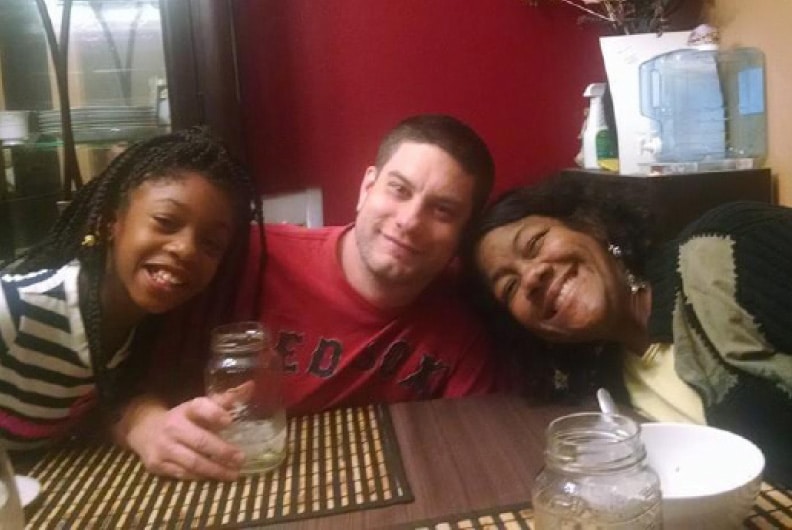Raising A Black Child In A White Family In 2020
By Kerri Cooke
On the popular app TikTok, 18-year-old Cameron Welch describes the unspoken rules that have been instilled in him growing up in an African-American family. The audio is as follows:
“Don’t put your hands in your pockets. Don’t put your hoodie on. Don’t be outside with no shirt on. Don’t touch anything you’re not buying. Never leave the store without a receipt or a bag, even if it’s just a pack of gum. Never make it look like there’s an altercation between you and someone else. Never leave the house without your ID. Don’t drive with a wifebeater on. Don’t drive with a du-rag on. Don’t go out in public in either. Don’t ride with the music too loud. Don’t stare at a Caucasian woman.”
These rules are concepts that Caucasian parents don’t teach their children because they don’t have to. Whites are generally not looked at with suspicion. This video makes the disparity between the races even more obvious.
While this reality is a tragedy, it raises the question of how white parents can teach their black children, in the case of interracial adoption, without the experience of having grown up in black culture.
Different Cultural Identities
It is often said that it takes a village to raise a child. This is especially so when adopting a child, and even more so when adopting a child of another race.
My brother, Shawn, and sister-in-law, Gloria, first started toying with the idea of adoption in 2012. They went in with the conviction that they wanted to help less fortunate children. The first child they adopted was Juli.
They had to foster Juli for six months before she officially became part of the family in 2015.
Before they could adopt, Shawn and Gloria had to take 30 to 40 hours of classes. And one of those classes was dedicated to interracial adoptions.
Adopting a child is always challenging. But in an interracial adoption, there were even more things Shawn and Gloria needed to be aware of.
Shawn says that the first thing that you have to realize if you are white and adopting a black child is that “racial issues exist.” Denying the obvious or downplaying the fact is not helpful. Shawn says you have to acknowledge that “how you look plays a part in people defining you.”
Shawn adds that the most important thing in the adoptive relationship is to assure his daughter that while she will never look like him, she is still 100 percent his child. He says that he looks for opportunities to acknowledge that fact every day because he doesn’t want her to think he is denying any part of her identity in any way.
There is already a “native problem of ‘where do I come from’ no matter the child,” says Shawn. An adopted child is always going to long to know the answers to the questions “Where do I come from,” “Who am I,” and “What were my birth parents like?”
“Parents are [children’s] direct cultural representatives and, when adopting, the cultural representative is not there.” As a white parent, Shawn says, he “can’t identify with the black experience.” So, from day one, he knew they had to seek out help and find a “cultural surrogate.”
Shawn and Gloria were already good friends with a couple in their neighborhood, Dawn McQueen Hargrove, or “Honey,” and her husband, Michael. When they adopted Juli, they made sure to ask the Hargroves for help.
In the beginning, Gloria and Shawn came up against a challenge with haircare. Gloria knew how to take care of Juli’s hair because she had been a nanny to some bi-racial children in the past. But Juli wouldn’t take her word for it because, since Gloria didn’t have hair like her, Juli assumed that Gloria couldn’t know what she was talking about.
So Gloria and Shawn consulted Honey. Honey talked to Juli and reaffirmed what her parents were telling her. Shawn says it was helpful to Juli because Honey was “validating something about [her] appearance that her parents were saying.”
Juli has been told that she can visit Honey anytime she wants. If she wants to know what her parents’ experiences were growing up they can only speak from a white standpoint. However, if Juli asks someone in the black community, she will be able to connect with her heritage in a new way.
Shawn adds that you can “never take the place of someone’s cultural history.” Juli needs to know her history. The purpose of adoption is to give a child a loving family — not to change them to fit a certain mold.
The Police
When it comes to teaching Juli about the different ways law enforcement can view African-Americans, Shawn says that the opportunity for the conversation has come up a few times.
In the early days after Shawn and Gloria adopted Juli, there were instances that were uncomfortable. Juli was dealing with anger, as many children who have been in the foster system can.
When the family was out to eat, Juli got upset, ran out of the restaurant and started yelling that Shawn and Gloria were not her real parents and she didn’t have to listen to them.
While this statement is innocently coming from a child who is no longer living with her biological parents, it can obviously be problematic to her new family.
Shawn says that he and his wife had to deal with the issue from a parental standpoint. They told Juli that it was dangerous to run out into a parking lot. Shawn adds it “wasn’t our place to explain the complete context of how that looked.” The couple got Honey to talk to Juli about how others could misconstrue the incident.
While Juli was learning how to deal with her anger, Shawn says that Honey made it a point to tell her that most cops are white and they can view blacks differently than whites. Honey has firsthand experience, as her son was stopped by an officer for no apparent reason other than the color of his skin.
Shawn says that while whites look at the George Floyd case in the sense that what the cops did to this guy is wrong, from the African-American viewpoint, it was “something wrong being done to my people” — something the black community has seen over and over and over again since America was founded.
However, Shawn feels that living in Austin, Texas, where he says there are “as many interracial families as homogenous ones,” gives the family an advantage because of the diversity of the locale.
While he “doesn’t feel qualified” to talk about racial issues with Juli, he and Gloria “take every opportunity to be sure and remind the kids that when you look at people, you see people and treat them with respect.” And, if you end up in an unjust situation, it is “always better to remain as calm as possible and later on deal with the vindication.” “Remember in the situation that it’s not you that’s the problem. It’s the other person that’s the problem.”
What Future He Sees For His Daughter In Light Of The Events In 2020
Shawn was still a kid when the Rodney King case was going on. He says he doesn’t remember the riots but distinctly remembers the video. “All I saw was a whole bunch of cops beating a guy on the ground with their batons.” He said it was clearly an awful event, but he doesn’t remember people in law enforcement publicly condemning the actions of the officers. It could’ve happened, he adds, but he doesn’t remember there being anything distinct.
Fast forward to 2020 with the case of George Floyd. The mayor of Minneapolis said the officers involved should be fired and the police chief apologized on national television.
Shawn says that this time you “finally saw people in the policing profession immediately say, ‘This is wrong.’”
Another difference Shawn sees compared to the instance in 1992 is that protests are more widespread. While protests over the acquittal of officers in the Rodney King case led to protests in inner city areas of Los Angeles, the protest didn’t spread to other areas of the country. Now, there are more protest in suburban areas and in more communities where there is a white population all across the country.
Shawn says that he “holds hope” that his daughter will live in a society where there is more racial equality, but “it’s going to be a long road.”
He says the George Floyd case “finally shows people to stop looking from their perspective. Put your perspective from that guy’s perspective and that changes the game. We will be better served along the road if we continue to educate more white people that we never can identify with hundreds of years of discrimination.”
Part of the reason systemic racism still exists is because of whites’ “detached point of view.” Shawn stresses that “it’s important to understand that detached view is different from the emotional view of those who look like him, [who] have seen over and over again [this] happen to [their] people.”
It will “take time and healing for [racial inequality] to change,” but Shawn believes we have finally reached the starting point for real change — a change that will allow his daughter to live a safer and happier life.


















Comments are closed.